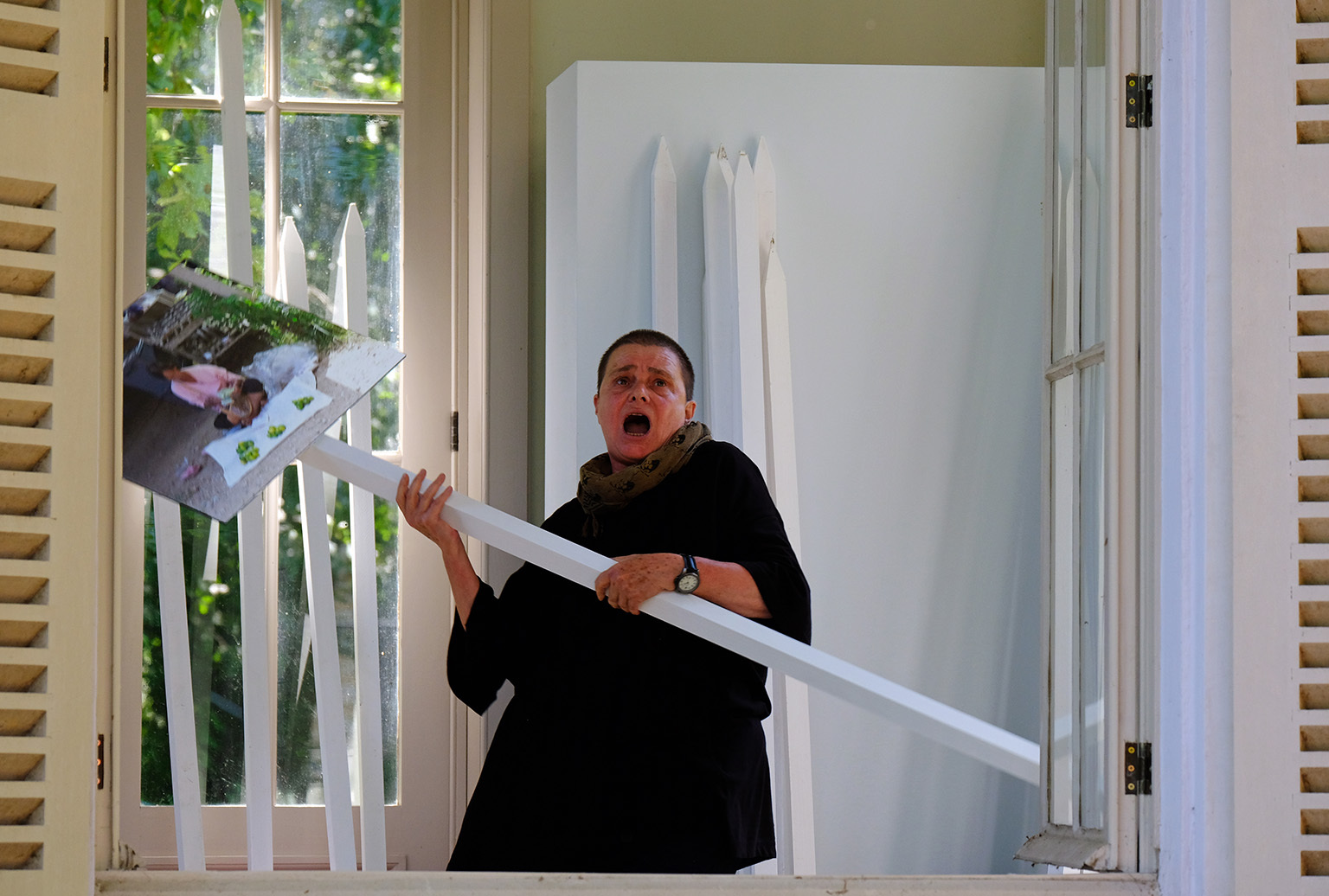Talk

Critical Spatial Practice: Slam, Ramble, Perform
Ria Pacquée ‘rambles’ and discreetly records events from her particular point of view.
Ria Pacquée had her international breakthrough in the 1980s with a performance series featuring the self-conceived characters Madame and It. By infiltrating reality as these two personae, she carried out an artistic investigation on the thin line between fiction and documentary. In more recent work she focuses on photographic and video productions, but her experiences as a performance artist still play an important role in the process.
As a spectator of public life in her photographs and videos and as a participant in the performances, ‘the street’ is Ria Pacquée’s area of study – the living setting where she ‘rambles’ and discreetly records events from her particular point of view. An interest in rituals, the ‘non-sense’ of religions, anonymous city wandering and the collecting of its accompanying sounds and images — a recreation and appropriation of reality by extracting details from their everyday context — are recurring themes in her work. But much is left to chance as well.
Forelesningen er et samarbeid mellom MAPS og Kunstakademiet, og en del av forelesningsserien Critical Spatial Practice.
Ria Pacquée i Tegnerforbundet Søndag 12. januar kl.14 inviteres det til et møte mellom Ria Pacquée og Liv Bugge der de gjør en intervensjon i utstillingen Leda og svanen med Marthe Ramm Fortun og Andrea Galliazzo i Tegnerforbundet. Utstillingen er del av Tegnetriennalen 2019.
Critical Spatial Practice is a title for a public lecture program proposed and run by students and professors. The aim of this course is to create a discursive space by presenting various practices that work within spatial domain; not necessarily only art practices also designers, urban planners, sociologists, geographers, political scientists etc.
The program is developed at the end of the academic year for the next academic year. It is open for public and possibly worked out in cooperation with a network of external partners of the study program.
Critical Spatial Practice term was introduced by Jane Rendell in 2003, and in 2006 in Art and Architecture: A Place Between, she developed and consolidated the term as one that defined practices located at a three-way intersection: between theory and practice, public and private, and art and architecture. For Rendell, critical spatial practice is informed by Michel de Certeau’s The Practice of Everyday Life (1980, translated into English in 1984), and Henri Lefebvre’s The Production of Space (1974, translated into English in 1991), as well as the critical theory of the Frankfurt School.
However the term aims to transpose the key qualities of critical theory – self-reflection and social transformation – into practice. Critical spatial practices are those, which seek to question and transform the social conditions of the sites into which they intervene, as well as test the boundaries and procedures of their own disciplines